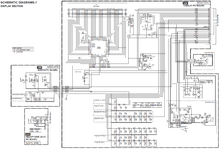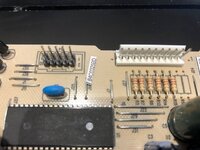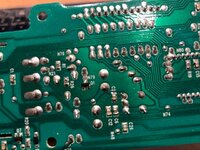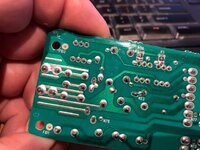siliconvalleygarage
Newbie
If you look at circuit boards from televisions , kitchen appliances , camcorders, audio equipment like harman kardon, onkyo etc . They have a distinctive 'look'. Many of these boards have special features. for example : many power supply and audio boards are single sided and use stitched wire bridges so the software needs to have provisions for that ( you are not going to drop wire bridges in schematics as parts , the pcb layout editor needs to do that on the fly, yet be able to export x-y coordinates so the pick and place machine can bend a piece of wire and shoot it , so length , rotation x,y needs to be exported. ) Same for the pcb's used in many switching power supplies like for pc and laptops. These all have very distinctive looks when it comes to routing style , island formation , pad formation etc.
So my question is : what do these guys use as pcb cad software. It is not going to be the usual suspects like cadence or mentor or altium or zuken. It may not even run on pc but be solaris/unix based. ( i know of a many esoteric systems like Bentley , Visula, Racal-Redac, Daisy systems, Vanguard (many european tv boards were made on that) SciCards, EMC and others but they all have been 'borged' by others)
So i am interested to see what tv makers like samsung, lg , sony use.. or companies like astec and antec , or harman kardon , onkyo , denon and others. Just look at service manuals from onkyo and clarion for example and look at those pcb layouts. Same thing if you take a camcorder from sony or canon apart. That is a very distinctive style. With boards that can be broken apart after soldering to mount them in the chassis. Even the wire harnesses are soldered before they break the boards apart.
So, who knows ? and who actually is using these tools ?
So my question is : what do these guys use as pcb cad software. It is not going to be the usual suspects like cadence or mentor or altium or zuken. It may not even run on pc but be solaris/unix based. ( i know of a many esoteric systems like Bentley , Visula, Racal-Redac, Daisy systems, Vanguard (many european tv boards were made on that) SciCards, EMC and others but they all have been 'borged' by others)
So i am interested to see what tv makers like samsung, lg , sony use.. or companies like astec and antec , or harman kardon , onkyo , denon and others. Just look at service manuals from onkyo and clarion for example and look at those pcb layouts. Same thing if you take a camcorder from sony or canon apart. That is a very distinctive style. With boards that can be broken apart after soldering to mount them in the chassis. Even the wire harnesses are soldered before they break the boards apart.
So, who knows ? and who actually is using these tools ?



